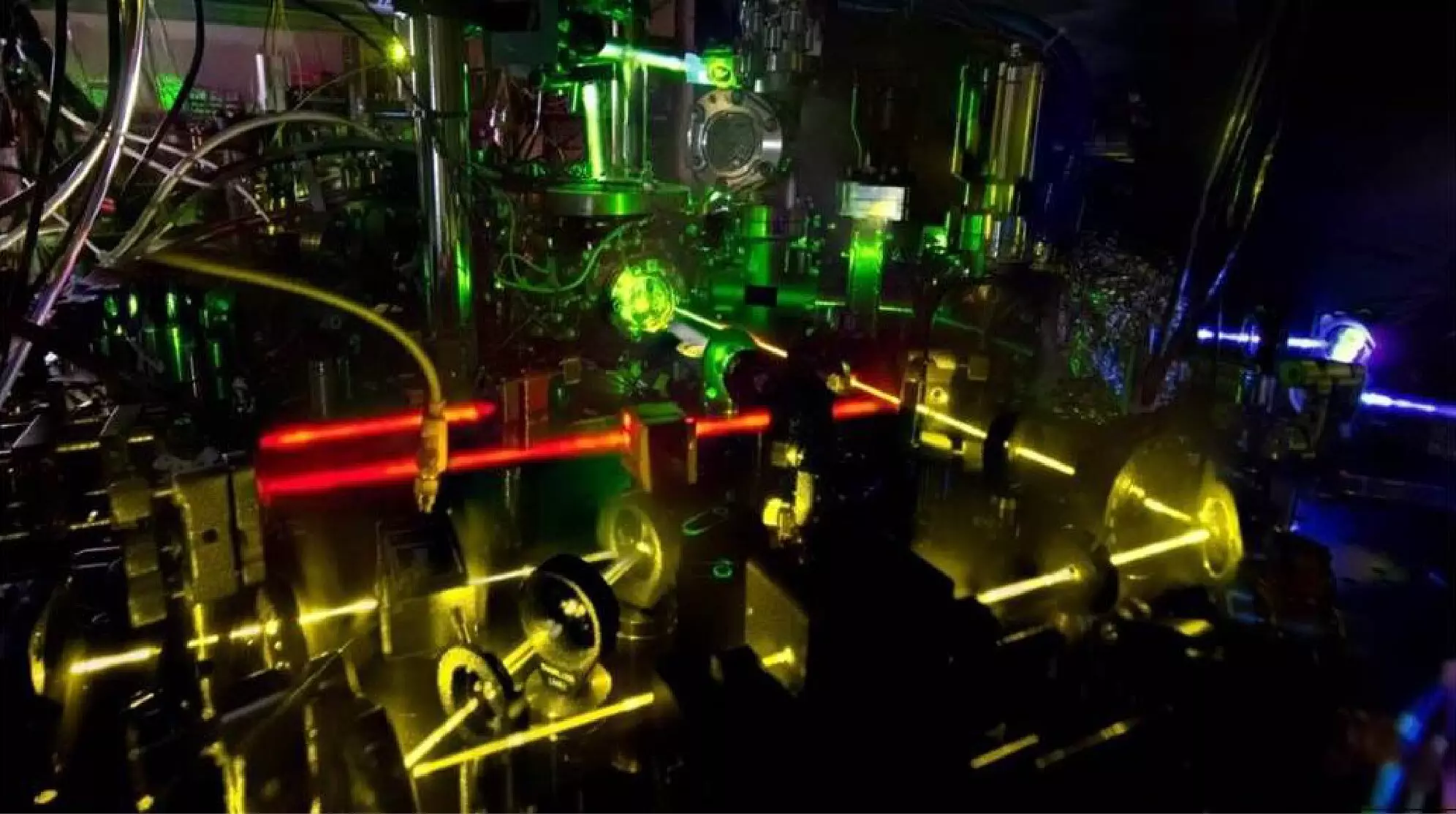In the world of precise timekeeping and quantum metrology, researchers from the Neutral Atom Optical Clocks Group at the National Institute of Standards and Technology (NIST), alongside collaborators from the University of Colorado and Pennsylvania State University, have made significant strides. Their recent publication in Physical Review Letters describes a pioneering sub-recoil Sisyphus cooling method, a technique specifically aimed at enhancing the precision of atomic clocks. This innovation is not limited to just one clock; it holds promise for improving various atomic timekeeping devices and advancing quantum measurement tools across the board.
Atomic clocks operate on the fundamental principle of referencing time to the oscillation frequencies of atoms. High-precision spectroscopy plays a crucial role in this process, enabling scientists to target atomic states defined by long lifetimes and incredibly narrow transition linewidths, often at sub-Hz levels. Though historically conventional, these techniques have continually evolved, and in a serendipitous moment of inspiration, researcher Chun-Chia Chen and his colleagues at NIST came across a prior work on Sisyphus cooling applied to hydrogen and anti-hydrogen. By adapting this principle, they embarked on a mission to revolutionize their atomic clock’s performance.
The Sisyphus cooling approach essentially exploits the quantum mechanical behavior of atoms. By modulating the potential energy landscape that atoms experience, the researchers engineered conditions where atoms exhibit a periodic shift in energy states. By strategically designing the excitation conditions, they ensured that atoms would experience cooling by climbing the modulated potential, efficiently losing kinetic energy and improving their operational state for enhanced clock stability.
Technical Innovations in Atomic Spectroscopy
Chen’s team meticulously fine-tuned their methodology by integrating both ultra-narrow spectroscopy and Sisyphus cooling into a seamless framework. By leveraging a Ytterbium-based optical lattice clock, they demonstrated how their nuanced modulation of energy levels could yield substantial gains in clock precision. The core challenge they sought to overcome stems from the variability in trapping potentials that atoms experience in different states, which serves as an adversary to achieving reliable clock spectroscopy.
Through clever engineering of the trapping conditions, specifically manipulating the wavelength of the lasers involved, Chen and his collaborators managed to neutralize the intrinsic differences experienced by the atoms in various states. This meticulous process ultimately allowed them to achieve remarkably stable conditions conducive to high-precision measurements.
The implications of the newly devised Sisyphus cooling method extend far beyond atomic clocks. In addition to bolstering the accuracy of current optical clock systems, this technique could be instrumental in cooling samples for cutting-edge applications such as quantum information systems and computing technologies. As researchers continue to explore the depths of quantum mechanics, the findings from NIST could pave the way for both practical technologies and a deeper understanding of quantum physics.
Further discussions on potential applications highlight that continued research efforts could yield significant advancements in sample uniformity within the magic-wavelength laser traps. According to Andrew Ludlow, another researcher involved in the project, enhanced atomic ensembles with uniform properties can directly contribute to a more thorough examination of the minute physicochemical effects impacting clock frequency.
Looking ahead, the NIST team anticipates scaling their innovative cooling techniques to further develop optical lattice clocks with increased accuracy. By pushing the boundaries of atom cooling, researchers will be empowered to ascertain more refined measurements and broaden their foundational understanding. As these optical clocks become increasingly precise, they will not only redefine the standards for timekeeping but also impact various fields including global positioning systems (GPS), telecommunications, and fundamental science.
The impending studies promise to enhance our knowledge of atomic behavior under modified conditions, potentially leading to discoveries that further blur the lines between classical physics and quantum phenomena. The current research signifies a crucial step towards unlocking the potential of atomic clocks and exemplifies the ingenuity inherent in modern scientific exploration.
The recent development of the sub-recoil Sisyphus cooling technique is a testament to the relentless pursuit of excellence in atomic clock technology. By merging sophisticated cooling strategies with high-precision spectroscopy, researchers are reshaping our understanding of time and its measurement, promising to usher in a new era in quantum metrology and its associated applications.


Leave a Reply